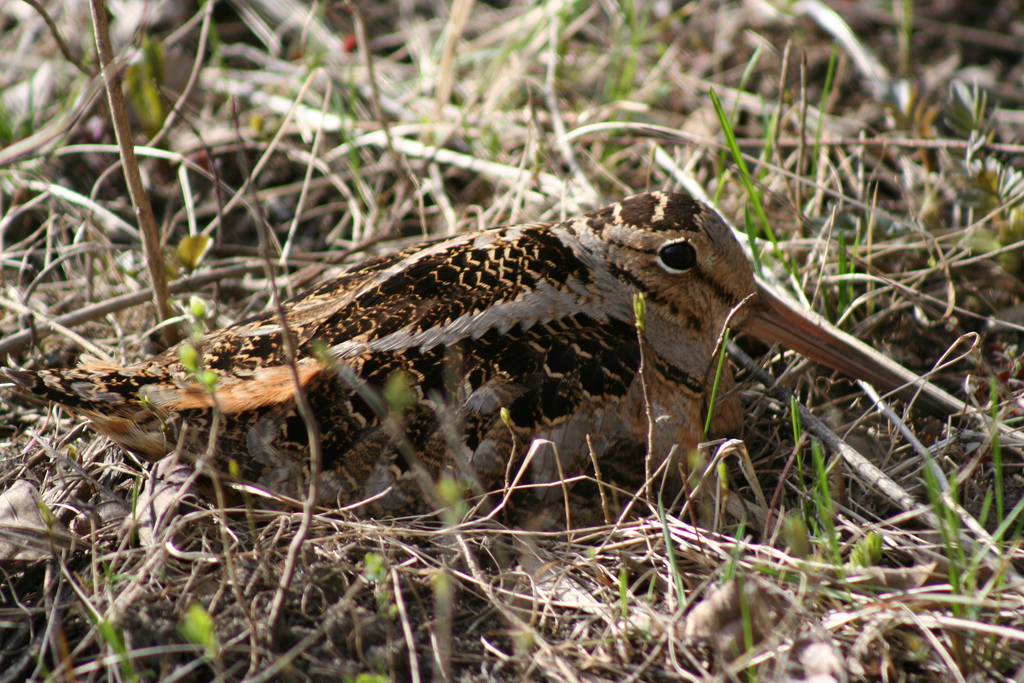|
A Feather In Your Cap
The term ''a feather in your cap'' is an English idiomatic phrase believed to have derived from the general custom in some cultures of a warrior adding a new feather to their headgear for every enemy slain. Or in other cases from the custom of establishing the success of a hunter as being the first to bag a game bird by plucking off the feathers of that prey and placing them in the hat band. The phrase today has altered to a more peaceful allusion, where it is used to refer to any laudable success or achievement by an individual that may help that person in the future. Traditions involving feathers in headdress Examples of the use of feathers related to the killing of enemy combatants can be found in the traditional cultures of the Meunitarris of Alberta; and the Mandan people (present-day North and South Dakota), both of whom wore feathers in their headdress: and also the Caufirs of Cabul who are said to have stuck a feather in their turban for every enemy slain. Similar ... [...More Info...] [...Related Items...] OR: [Wikipedia] [Google] [Baidu] |
White Feather
The white feather is a widely recognised propaganda symbol. It has, among other things, represented cowardice or conscientious pacifism; as in A. E. W. Mason's 1902 book, ''The Four Feathers''. In Britain during the First World War it was often given to males out of uniform by women to shame them publicly into signing up. In the United States armed forces, however, it is used to signify extraordinary bravery and excellence in combat marksmanship. As a symbol of cowardice The use of the phrase "white feather" to symbolise cowardice is attested from the late 18th century, according to the ''Oxford English Dictionary''. The OED cites ''A Classical Dictionary of the Vulgar Tongue'' (1785), in which lexicography, lexicographer Francis Grose wrote "White feather, he has a white feather, he is a coward, an allusion to a game cock, where having a white feather, is a proof he is not of the true game breed". This was in the context of cockfighting, a common entertainment in Georgian Eng ... [...More Info...] [...Related Items...] OR: [Wikipedia] [Google] [Baidu] |
Cacique
A ''cacique'' (Latin American ; ; feminine form: ''cacica'') was a tribal chieftain of the Taíno people, the indigenous inhabitants at European contact of the Bahamas, the Greater Antilles, and the northern Lesser Antilles. The term is a Spanish transliteration of the Taíno word ''kasike''. Cacique was initially translated as "king" or "prince" for the Spanish. In the colonial era the conquistadors and the administrators who followed them used the word generically, to refer to any leader of practically any indigenous group they encountered in the Western Hemisphere. In Hispanic and Lusophone countries, the term also has come to mean a political boss, similar to ''caudillo,'' exercising power in a system of ''caciquismo''. Spanish colonial-era caciques The Taíno word ''kasike'' descends from the Taíno word ''kassiquan'', which means "to keep house". In 1555 the word first entered the English language, defined as "prince". In Taíno culture, the ''kasike'' rank was her ... [...More Info...] [...Related Items...] OR: [Wikipedia] [Google] [Baidu] |
War Bonnet
A modern-day dog soldier wearing a feathered headdress during a pow wow at the Indian Summer festival in Henry Maier Festival Park, Milwaukee, Wisconsin. 2008. War bonnets (also called warbonnets or headdresses) are featherwork, feathered headgear traditionally worn by male leaders of the American Plains Indians Nations who have earned a place of great respect in their tribe. Originally they were sometimes worn into battle, but they are now primarily used for ceremonial occasions. In the Native American and First Nations communities that traditionally have these items of regalia, they are seen as items of great spiritual and political importance, only to be worn by those who have earned the right and honour through formal recognition by their people.'' Life of George Bent: Written From His Letters'', by George E. Hyde, edited by Savoie Lottinville, University of Oklahoma Press (1968), hardcover, 390 pages; trade paperback, 280 pages (March 1983), pp 214, 216, 239, 307. , .''The Ba ... [...More Info...] [...Related Items...] OR: [Wikipedia] [Google] [Baidu] |
Victory Marking
A victory marking (also called a victory mark, kill marking, or kill mark) is a symbol applied in stencil or decal to the side of a military aircraft to denote an aerial victory achieved by the aircraft's pilot or crew. The use of victory markings originated during World War I, burgeoned during World War II and frequently took the form of the roundel or national flag of the nationality of the aircraft defeated. In the United States Air Force, as of 2010, victory markings are applied in the form of six inch green stars set within a black border with the type of aircraft defeated stenciled inside the star in white lettering. Victory marks have been applied to aircraft for reasons other than aerial victories. During the period of its use for astronaut recovery, the U.S. Navy's Helicopter 66 bore victory marks showing a space capsule silhouette, with one mark added for each recovery in which it participated. In 2012, a German Eurofighter was spotted with a kill mark denoting a simulat ... [...More Info...] [...Related Items...] OR: [Wikipedia] [Google] [Baidu] |
Tyrolean Hat
The Tyrolean hat (german: Tirolerhut, it, cappello alpino), also Bavarian hat or Alpine hat, is a type of headwear that originally came from the Tyrol in the Alps, in what is now part of Austria, Germany, Italy and Switzerland. It is an essential and distinctive element of the local folk costume, or ''tracht''. Description A typical Tyrolean hat is made of green felt, which originally had a crown tapering to a point and a brim roughly the width of a hand, something that was especially common in the Zillertal, a Tyrollian valley in Austria. In addition to varying in shape and width of brim, the hats are characteristically decorated with a coloured, corded hatband and a spray of flowers, feathers or "brush" at the side of the crown. The traditional "brush", known as a ''gamsbart'', is made of the beard of the chamois goat. A large and showy one may contain thousands of individual hairs, and cost between $2,500 and $3,000. It takes a variety of forms, and may often be combin ... [...More Info...] [...Related Items...] OR: [Wikipedia] [Google] [Baidu] |
William Tell
William Tell (german: Wilhelm Tell, ; french: Guillaume Tell; it, Guglielmo Tell; rm, Guglielm Tell) is a folk hero of Switzerland. According to the legend, Tell was an expert mountain climber and marksman with a crossbow who assassinated Albrecht Gessler, a tyrannical reeve of the Austrian dukes of the House of Habsburg positioned in Altdorf, in the canton of Uri. Tell's defiance and tyrannicide encouraged the population to Burgenbruch, open rebellion and a Rütlischwur, pact against the foreign rulers with neighbouring Schwyz and Unterwalden, marking the foundation of the Old Swiss Confederacy, foundation of the Swiss Confederacy. Tell was considered the father of the Swiss Confederacy. Set in the early 14th century (traditional date 1307, during the rule of Albert I of Germany, Albert of Habsburg), the first written records of the legend date to the latter part of the 15th century, when the Old Swiss Confederacy, Swiss Confederacy was gaining military and political influ ... [...More Info...] [...Related Items...] OR: [Wikipedia] [Google] [Baidu] |
Albrecht Gessler
Albrecht Gessler, also known as Hermann, was a legendary 14th-century Habsburg bailiff (german: Landvogt) at Altdorf, whose brutal rule led to the William Tell rebellion and the eventual independence of the Old Swiss Confederacy. Legend According to the ''Chronicon Helveticum'' by Aegidius Tschudi (1505–1572), in 1307 Gessler raised a pole in the market square of Altdorf, Uri, Switzerland placed his hat atop it, and ordered all the townsfolk to bow before it. Tell, whose marksmanship and pride were legendary, publicly refused. Gessler's cruel wrath was tempered by his curiosity to test Tell's skill, so he gave Tell the option of either being executed or shooting an apple off his son's head in one try. Tell succeeded in splitting the apple with his arrow, saving his own life. When Gessler asked why he had readied two arrows, he lied and replied that it was out of habit. After being assured that he wouldn't be killed, Tell finally admitted that the second was intended for the ty ... [...More Info...] [...Related Items...] OR: [Wikipedia] [Google] [Baidu] |
Altdorf, Uri
Altdorf (sometimes written as ''Altdorf UR'' in order to distinguish it from the other "Altdorfs"; German for "old village") is a historic town and municipality in Switzerland. It is the capital of the Swiss canton of Uri. The municipality covers an area of and is located about south of the mouth of the Reuss, which flows into the Lake Lucerne, here called the ''Urnersee''. The town AltdorfOfficially, Altdorf does not refer to itself as a town, but consistently uses the term of german: Gemeinde, aka 'municipality'. lies at an altitude of above sea level on the right, eastern bank of the Reuss, a flat, alluvial land of up to diameter between otherwise steep and high Alpine mountains of around elevation, but the municipality also covers the Alpine pasture landscape of Eggbergen about above Altdorf. It is also the junction towards to the two passes Saint Gotthard to the south, a major north–south axis through the Alps, and the Klausen Pass to the east. Altdorf sits on t ... [...More Info...] [...Related Items...] OR: [Wikipedia] [Google] [Baidu] |
Woodcock
The woodcocks are a group of seven or eight very similar living species of wading birds in the genus ''Scolopax''. The genus name is Latin for a snipe or woodcock, and until around 1800 was used to refer to a variety of waders. The English name its first recorded in about 1050. According to the Harleian Miscellany, a group of woodcocks is called a "fall". Taxonomy The genus ''Scolopax'' was introduced in 1758 by the Swedish naturalist Carl Linnaeus in the tenth edition of his ''Systema Naturae''. The genus name is Latin for a snipe or woodcock. The type species is the Eurasian woodcock (''Scolopax rusticola''). Only two woodcocks are widespread, the others being localized island endemics. Most are found in the Northern Hemisphere but a few range into the Greater Sundas, Wallacea and New Guinea. Their closest relatives are the typical snipes of the genus ''Gallinago''. As with many other sandpiper genera, the lineages that led to ''Gallinago'' and ''Scolopax'' likely diverged ... [...More Info...] [...Related Items...] OR: [Wikipedia] [Google] [Baidu] |
Lycia
Lycia (Lycian language, Lycian: 𐊗𐊕𐊐𐊎𐊆𐊖 ''Trm̃mis''; el, Λυκία, ; tr, Likya) was a state or nationality that flourished in Anatolia from 15–14th centuries BC (as Lukka) to 546 BC. It bordered the Mediterranean Sea in what is today the Provinces of Turkey, provinces of Antalya Province, Antalya and Muğla Province, Muğla in Turkey as well some inland parts of Burdur Province. The state was known to history from the Late Bronze Age records of ancient Egypt and the Hittite Empire. Lycia was populated by speakers of the Luwian language group. Written records began to be inscribed in stone in the Lycian language (a later form of Luwian) after Lycia's involuntary incorporation into the Achaemenid Empire in the Iron Age. At that time (546 BC) the Luwian speakers were decimated, and Lycia received an influx of Persian speakers. Ancient sources seem to indicate that an older name of the region was Alope ( grc, Ἀλόπη}, ). The many cities in Ly ... [...More Info...] [...Related Items...] OR: [Wikipedia] [Google] [Baidu] |
Dayak People
The Dayak (; older spelling: Dajak) or Dyak or Dayuh are one of the native groups of Borneo. It is a loose term for over 200 riverine and hill-dwelling ethnic groups, located principally in the central and southern interior of Borneo, each with its own dialect, customs, laws, territory, and culture, although common distinguishing traits are readily identifiable. Dayak languages are categorised as part of the Austronesian languages. The Dayak were animist (Kaharingan and Folk Hindus) in belief; however, since the 19th century there has been mass conversion to Christianity as well as Islam due to the spreading of Abrahamic religions. Etymology It is commonly assumed that the name originates from the Bruneian and Melanau word for “interior people”, without any reference to an exact ethnic group. The term was adopted by Dutch and German authors as an umbrella term for any non-Muslim natives of Borneo. Thus, the difference between Dayaks and non-Dayaks natives could be un ... [...More Info...] [...Related Items...] OR: [Wikipedia] [Google] [Baidu] |
Hungarians
Hungarians, also known as Magyars ( ; hu, magyarok ), are a nation and ethnic group native to Hungary () and historical Hungarian lands who share a common culture, history, ancestry, and language. The Hungarian language belongs to the Uralic language family. There are an estimated 15 million ethnic Hungarians and their descendants worldwide, of whom 9.6 million live in today's Hungary. About 2–3 million Hungarians live in areas that were part of the Kingdom of Hungary before the Treaty of Trianon in 1920 and are now parts of Hungary's seven neighbouring countries, Slovakia, Ukraine, Romania, Serbia, Croatia, Slovenia, and Austria. Significant groups of people with Hungarian ancestry live in various other parts of the world, most of them in the United States, Canada, Germany, France, the United Kingdom, Chile, Brazil, Australia, and Argentina. Hungarians can be divided into several subgroups according to local linguistic and cultural characteristics; subgroups with distinc ... [...More Info...] [...Related Items...] OR: [Wikipedia] [Google] [Baidu] |






.jpg)


.jpg)
